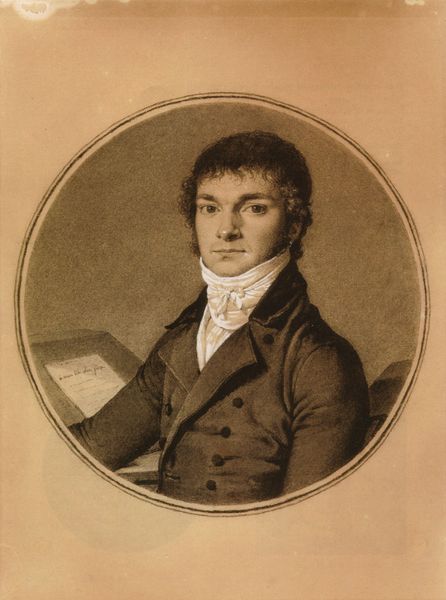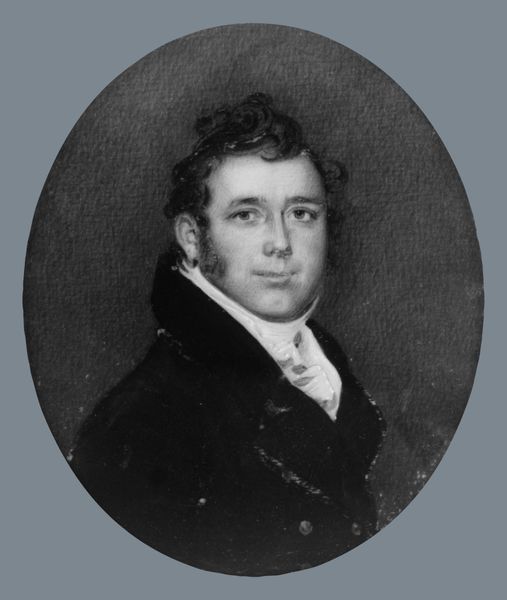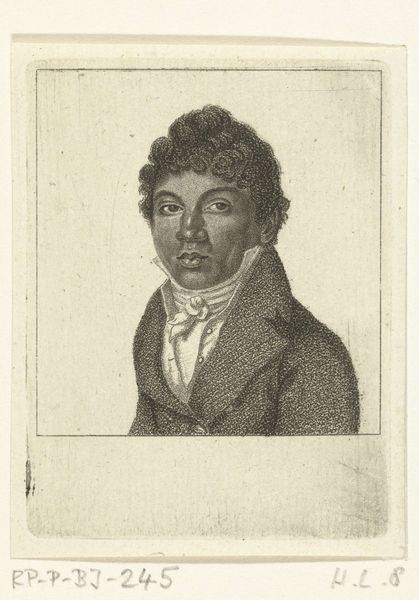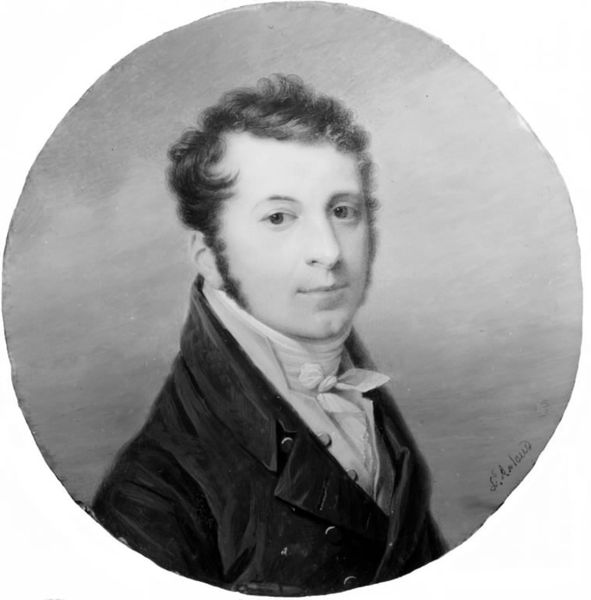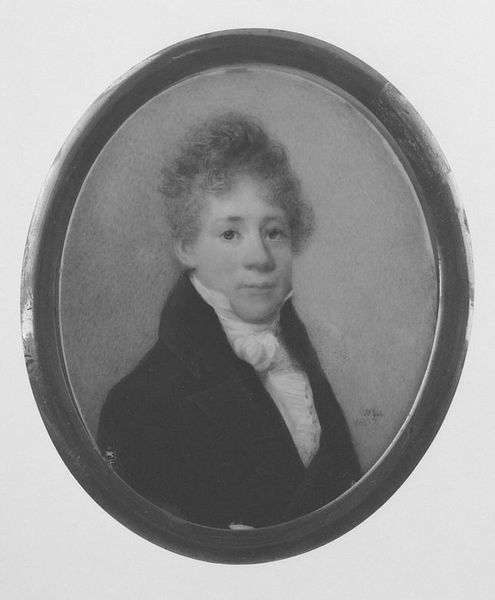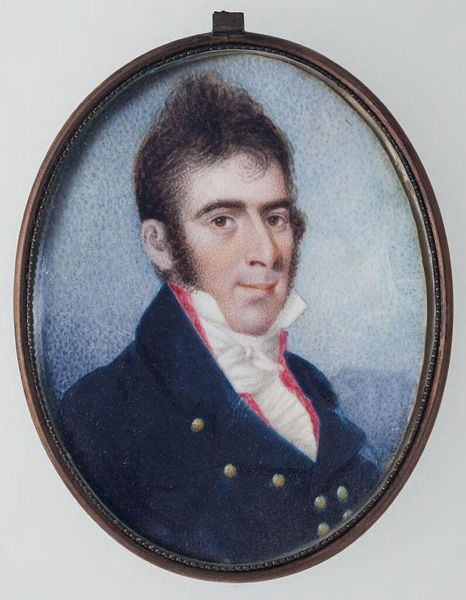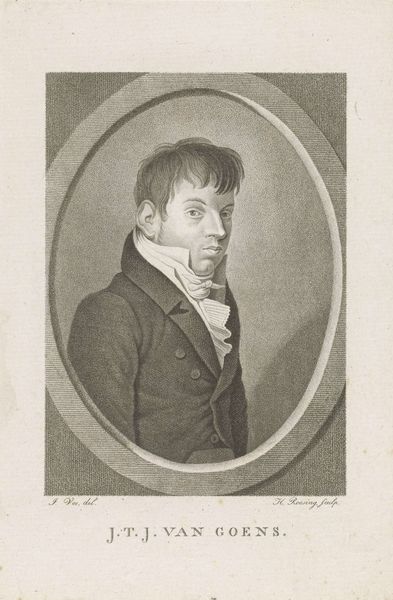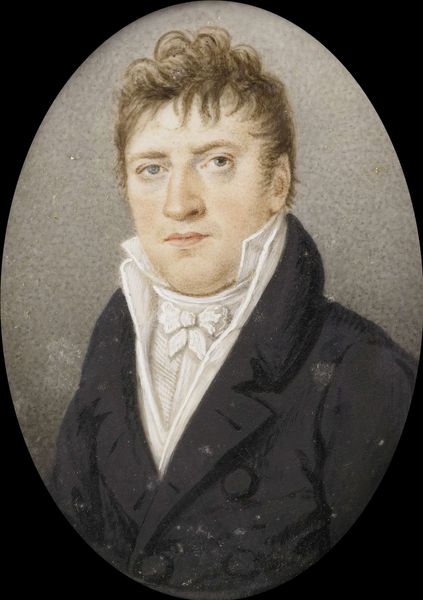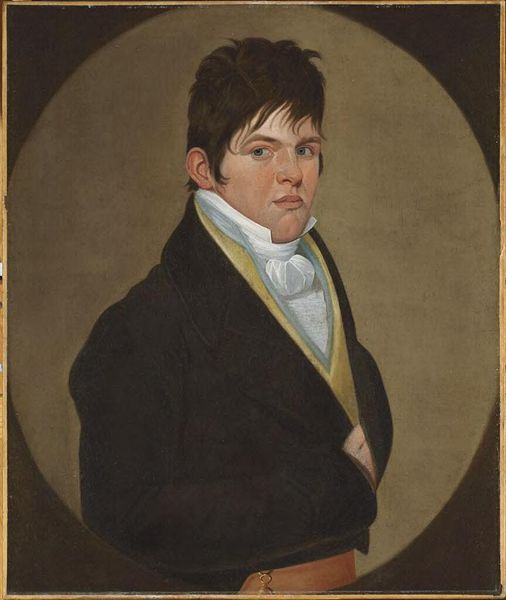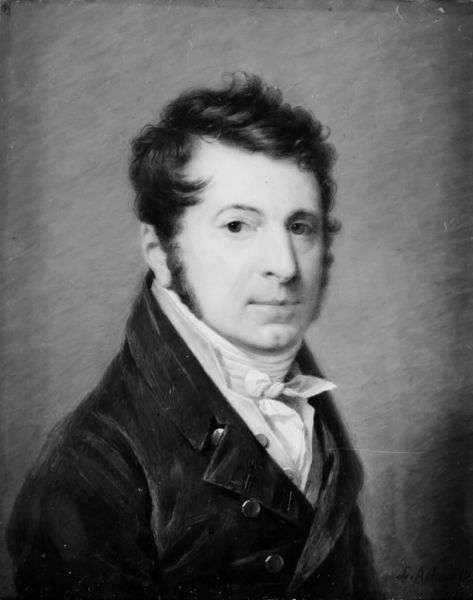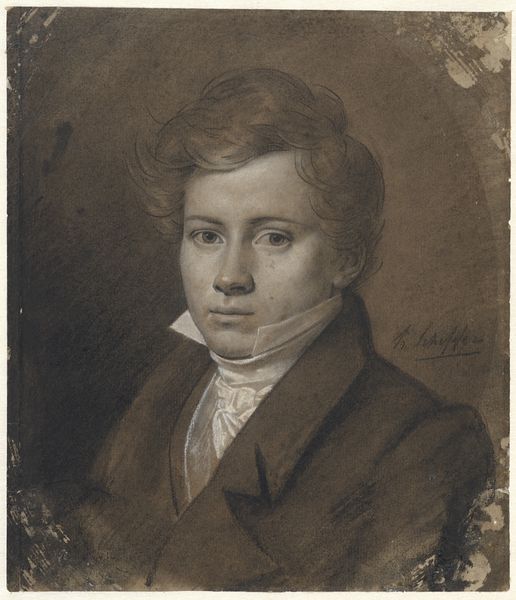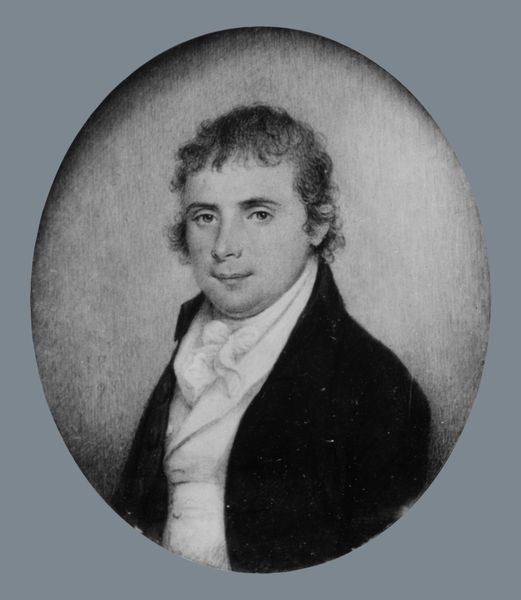
tempera, painting
#
portrait
#
neoclacissism
#
tempera
#
painting
#
oil painting
#
academic-art
#
portrait art
Dimensions: 2 7/8 x 2 5/16 in. (7.3 x 5.9 cm)
Copyright: Public Domain
Curator: This is Raphaelle Peale’s "Portrait of a Gentleman," likely painted between 1795 and 1805. It's currently residing here at the Metropolitan Museum of Art. My first impression is the precision in his brushwork, so smooth and delicate. Editor: There’s a wistful, almost melancholic, air to this portrait. Look at the averted gaze, the hint of a shadow. It whispers of something unspoken. And this circular format reinforces this sense of looking in a distant memory. Curator: That sense of memory might be rooted in the tempera on ivory. The meticulous process, the careful layering of pigments, all point to an art intended for posterity, to secure a legacy of status and respectability in line with neoclassical conventions. How was a portrait like this made available to the public or displayed? What's its context? Editor: Well, miniature portraits like this were often intimate objects, passed between family members or worn as jewelry. They become emblems of personal identity and familial connection, objects of emotional exchange. It would be interesting to unpack who this gentleman was in the network of relations within his family or the wider social sphere. I am thinking the delicate application speaks of the sitter's personal tastes and private identity. Curator: Exactly, and it brings up fascinating questions of artistic labour: how much input did the sitter have on his portrayal? Was he consciously presenting a certain image of masculinity, or was that dictated by social and artistic norms of the time? Tempera, you see, allows for an incredible level of detail. The fineness of this brushstroke really tells a great story of painstaking effort. The very labor of creating this is also of great social impact. Editor: There is something compelling in how portrait miniatures use inherited formats to evoke and transform the codes of remembrance, with some techniques that echo painting, but using far older languages that speak about family connection. Curator: A nice balance, wouldn't you agree? Editor: Indeed. An intimate lens on the American experience through material memory.
Comments
No comments
Be the first to comment and join the conversation on the ultimate creative platform.
